I don’t think our friends Alberto and Jerry knew it was Jackie’s birthday when they presented us with the best gift: a special chicken. It was special in a couple of ways. For one thing it had been raised carefully on a small farm near their place in Pennsylvania – Kreeky Tree Farm; for another, it was of a breed that I’ve never run into in New York at a butcher shop or a farmers’ market stand: closely related to the highly-regarded Bresse chickens raised in France, with their characteristic blue-black legs. (Our chicken’s legs had been left on to signal its heritage.)
Such a promising chicken deserved to be cooked simply, maybe roasted, or poached in stock with a creamy sauce made from the poaching liquid. Or – aha! – maybe pot-roasted. Pot-roasting is an underappreciated method for a whole chicken. But it has the appeal of regular roasting – it yields a golden-skinned object to be presented before carving if you like that kind of theater – with a few advantages. On the cooking side, once it is under way it requires little attention and timing is somewhat flexible. You could say the same of roasting, but few cooks can resist poking and monitoring even if they profess a minimalist just-throw-it-in-the-oven philosophy. True, you don’t get crackling skin, but after proper resting (20 or 30 minutes) even the crunchiest-skinned roast chicken will lose its crispness unless you fry it or torch it.
And on the plate, you get particularly flavorful flesh with thoroughly cooked dark meat and – unless you go out for a five-mile run and forget to retrieve the pot from the oven – breast meat that remains sufficiently moist (though it will never be as perfect as when the breast is cooked separately and attentively). Moreover, even though mostly cooked in a covered pan, it does not taste braised or stewed or steamed: it tastes very much like roast chicken.
Pot roasting is not complicated, though it begins with two extra steps. Here’s how I do it. I start an hour or a day ahead by seasoning the chicken generously with salt and pepper and cramming the cavity with mixed fresh herbs, more or less whatever you’ve got around. Try to include thyme or rosemary; other than that, you’re on your own. I then truss the chicken, not for the sake of so-called even cooking, but for ease of handling and for good looks. There are dozens of ways to do this, some using a big needle and some just string; I have no favorite method. Look at books or on-line videos and take your pick, so long as you end up with a compact football of chicken whose extremities do not flop around when you manipulate the chicken.
Heat the oven to a little higher than 350º F (say, 180º C). In a heavy casserole, preferably oval rather than round and big enough to hold the chicken snugly – I use Staub or Le Creuset enameled cast iron – lightly brown the chicken in a little butter or oil. Do this over medium-low heat, and give it four or five minutes on each “side”. If there are places that do not get browned, don’t worry about it, but ensure that the sides (drumsticks, thighs and wings) and the fore-end of the breast take on some color.
Meanwhile, slice an onion (or leek) and a carrot or two, and fetch a big clove of garlic (leave it whole, skin on or off). When the chicken is golden, remove it to a plate and put the vegetables into the casserole along with any poultry trimmings (wing tips, wishbone, skin scraps – and in this case feet); brown them lightly. Add butter (for flavor) and herbs – some or all of the ones inside the chicken – then douse with half a cup (120 ml) white wine, turn up the heat and boil it down until it no longer tastes or smells raw. Now add liquid – stock is ideal, but water will do – to just submerge the vegetables, and set the chicken on this base, adding any juices or fat that have accumulated on the plate it’s been resting on. Cover the casserole and put it in the oven.
An hour later (a little longer for a chicken much bigger than 3-1/2 pounds – 1.6 kg), remove the lid, make sure the liquid hasn’t disappeared (this is unlikely) and return the casserole to the oven, uncovered, for another 20 or 25 minutes. That should do it: grab one of the legs; if the thigh joint has loosened and wiggles easily even though trussed in place, you’re okay. It is that one-hour covered cooking time that’s a little flexible. You wouldn’t want to cook it much less than an hour, but if you left it in the oven for an hour and a quarter during that phase the chicken would not dry out.
Move the chicken, which will be browner than it was when you first browned it, onto a plate, lay a piece of foil over it (the foil is optional) and leave it alone for anywhere between 15 and 45 minutes. Put the casserole over medium-high heat, add stock (or water if that’s all you’ve got, in which case consider adding a tablespoon of good soy sauce) and boil until the sauce is delicious. And, because in this kind of cooking the chicken contributes a great deal to the juices, it will be delicious. Strain out the vegetables and scraps, pressing lightly to get as much goodness out of them as possible, let the fat rise to the surface and get rid of as much of it as you like. Simmer the sauce, checking for seasoning and, if you like, finishing with some chopped herbs, but not a lot.
Carve and serve. The delicious birthday-present chicken was served with corn fritters; a few nights later, an excellent free-range chicken from a good butcher was cooked in the same way and was eaten with minty eggplant (like the one I wrote about a while ago, but without the dates). Make soup or stock from the carcass; make Coronation Chicken or patties (call them rissoles or kotlety or croquettes if you like) with any leftover meat.
This could become your favorite way of “roasting” chicken.
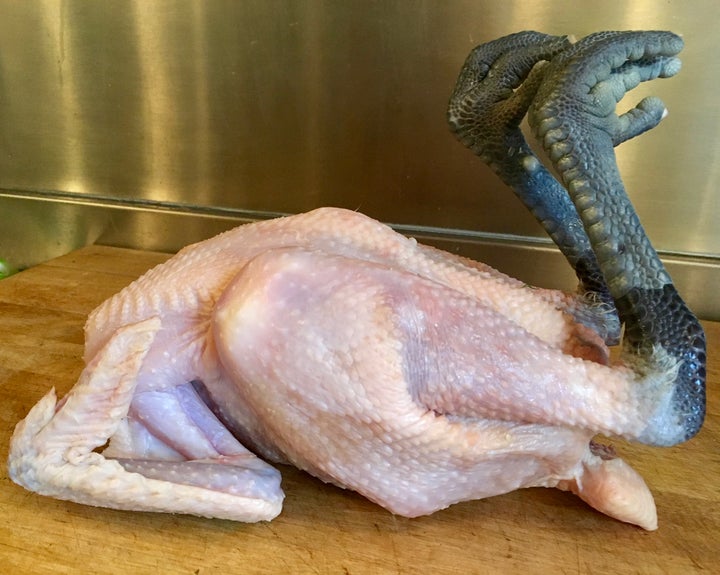
Our beautiful present, blue-black feet and all
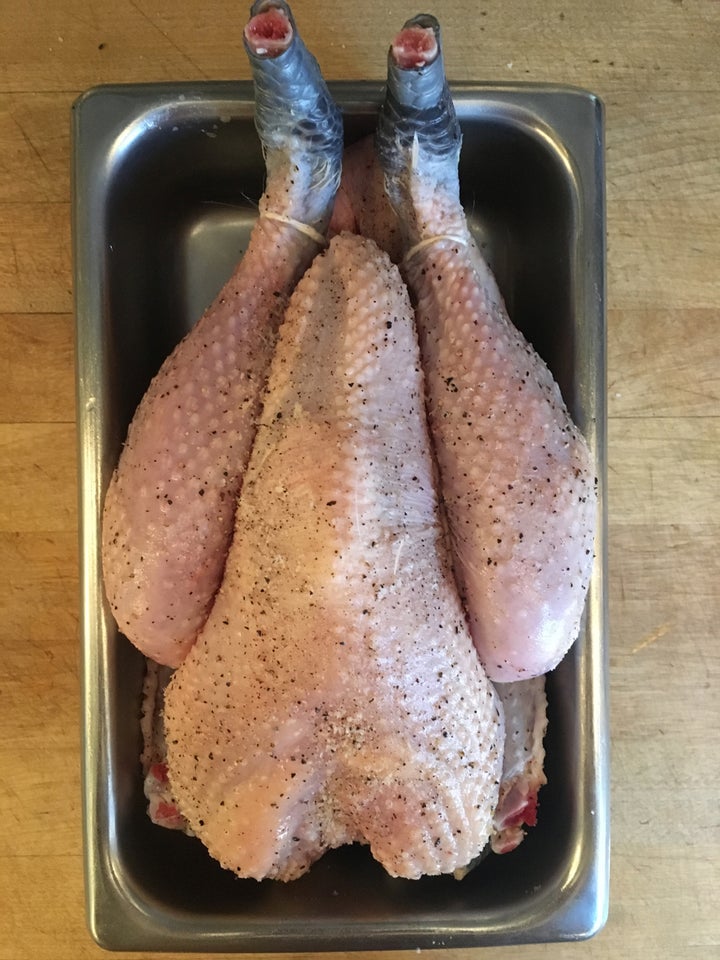
Trussed, seasoned and ready to be cooked

Gently browned in a heavy casserole

On a good day, aim for this kind of initial browning
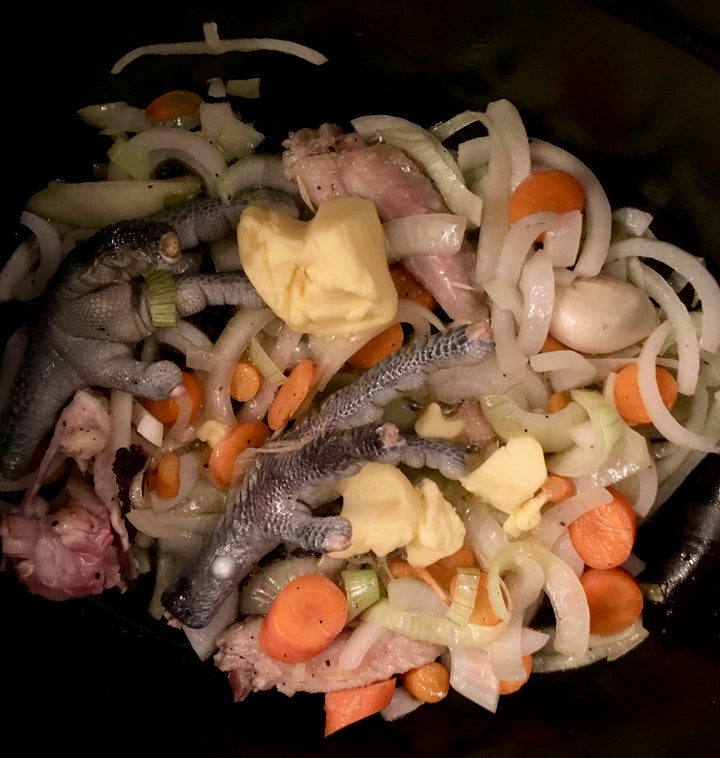
In the same pan: aromatics, chicken trimmings (including those beautiful feet) and butter
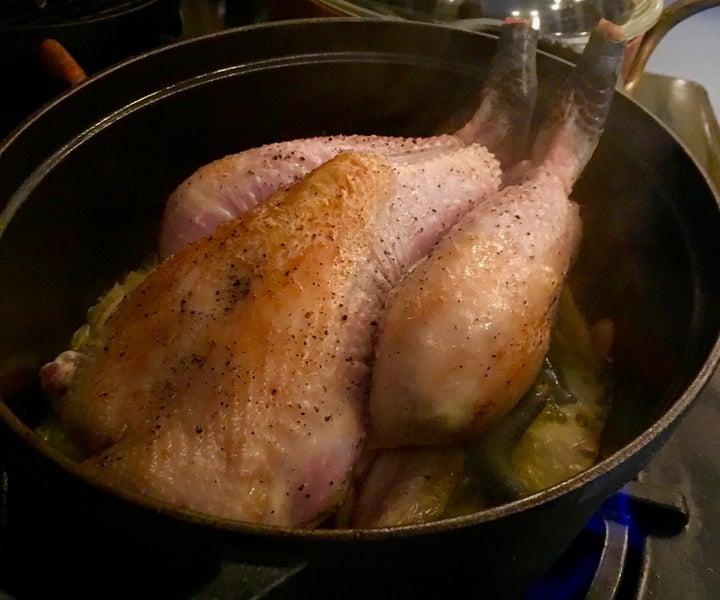
The browned chicken set over the aromatics, wine and stock
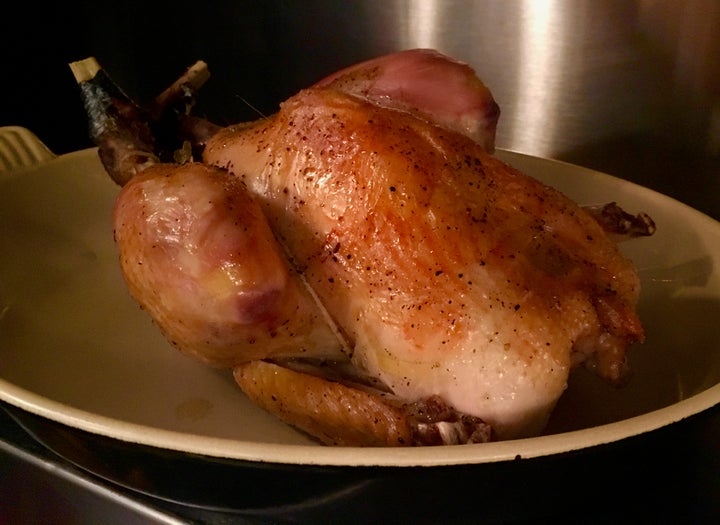
Pot-roasted chicken resting while the sauce is adjusted and strained
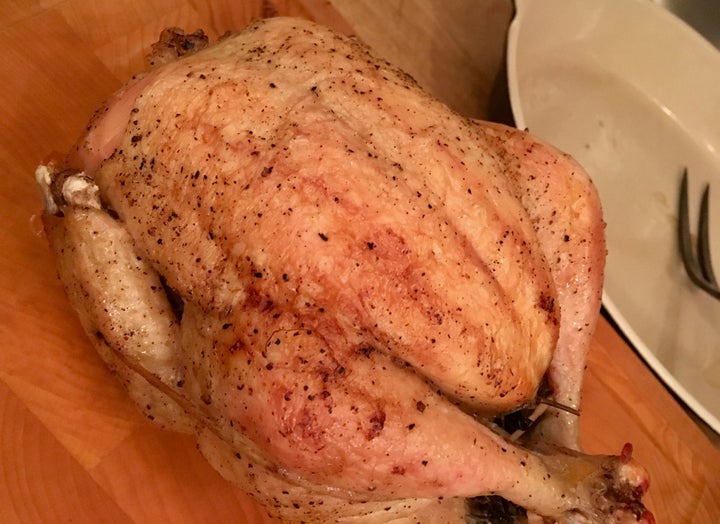
A few days later, a fine if less exotic chicken and a different method of trussing, but just about as good a dinner
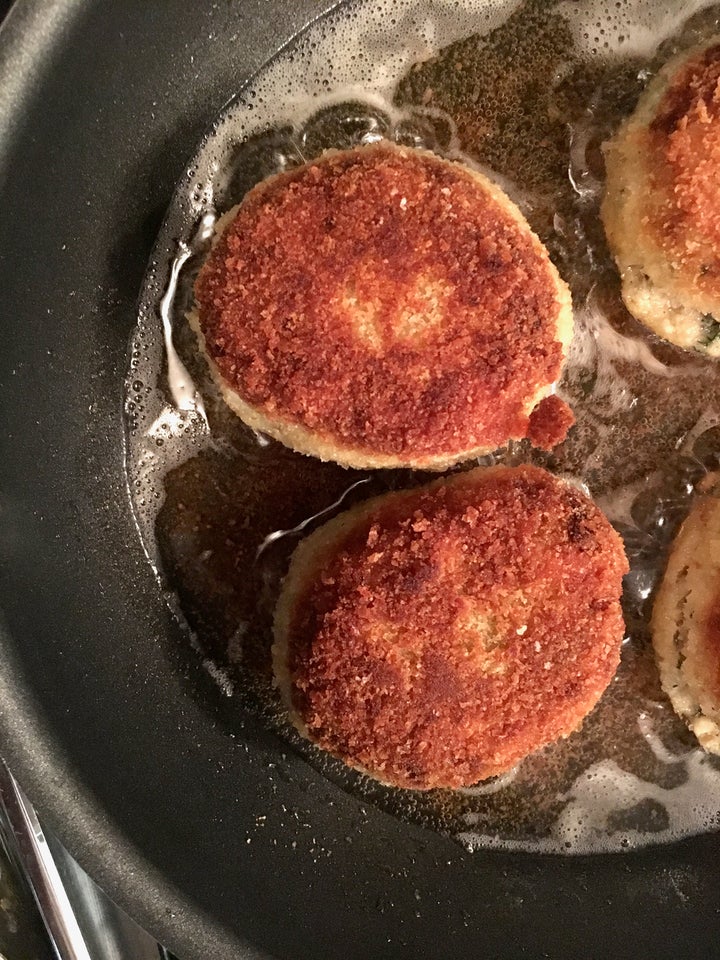
The leftovers? Chicken patties or rissoles or kotlety or croquettes, served with a dill sauce made from the original sauce plus tomatoes